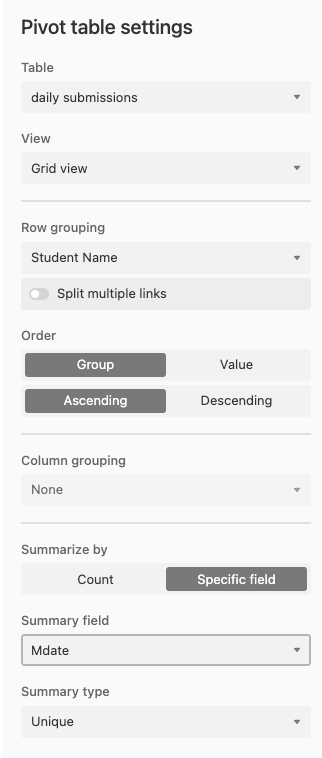I teach a class where students have to share information in a daily form. They get credit for the number of days they submit a form, not for the total number of forms submitted. The form feeds a Daily Submissions table, which is linked to a Students table.
Because I didn’t see something equivalent to Sheets/Excel COUNTUNIQUE in Airtable, I created a Pivot Table app in the Daily Submissions to calculate Days Shared.


I’m trying to figure out whether I can pull the number of Days Shared from the Pivot Table app back into a field corresponding to that student in a table of students, so I can share a view of table that includes Days Shared.
If that’s not possible, is there a way to count the unique days in a table without a pivot table? There is a Lookup field in the Students table that collects all the days, including duplicates, but I don’t know how to dedupe that.
Or do I need to do create an interface that displays the Pivot Table app data?
Thanks for your help!



